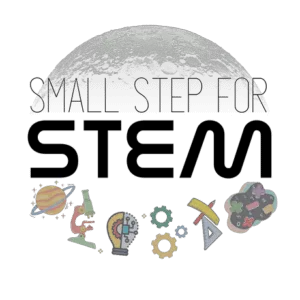Disclosure: this post contains affiliate links, which means I may receive a commission if you click a link and purchase something at no extra cost to you. Please check out our policies page for more details.
for more details.
Have you always wondered how a rocket launches into space? There’s a lot that goes into it, but today’s experiment helps kids to visualize rocket launches.
This experiment demonstrates a rocket launch while teaching kids about force, motion, and talking about what goes on inside of a rocket.
Before liftoff, we decided to watch a video of a rocket launching from the launchpad. It caused a lot of excitement and helped my kids visualize the launch even better.
Initiate launch sequence: it’s GO time!

How to make the How Does a Rocket Launch experiment
Supplies you will need
For this experiment, you’ll need:
- Balloon

- Thick straw

- String
 or fishing wire
or fishing wire (fishing wire works best to reduce friction)
(fishing wire works best to reduce friction) - Tape
- Chip clip or a binder clip

- Two chairs (or two objects to tie the string to)
- Scissors

- Optional: paper and markers to decorate
Here’s a young kid’s book about rockets and what they do that could accompany this experiment.

Before you start
Try playing with how much you inflate the balloon when launching to show how the amount of force changes!
Instructions
Here is how to do this experiment with your child:
Step 1: Thread the straw on the string
Start by threading the straw onto the string. This will be our rocket’s trajectory, so the longer the string, the longer the rocket can fly!

Step 2: Tie the string on two chairs (be sure it’s taut)
Place two chairs across from one another as far apart as your string allows. The string should be taut.

Step 3: Blow up the balloon and clip the end to hold the air inside
Blow up your balloon and place a clip at the end to hold the air inside.
Use some tape to connect the balloon to the straw.


Step 4 (optional): Decorate your rocket
If you would like to, provide some paper and markers and have your child make rocket parts to tape to the balloon!
Step 5: Launch!
When everyone’s ready, remove the clip and watch the rocket launch!
Here are some things to talk about:
- What direction does the air inside of the balloon go? The same direction or different than the balloon?
- How does air leaving the balloon out of the hole make it move?
- What would happen if we faced the balloon in the opposite direction? Which way would it move?

The STEM behind the How Does a Rocket Launch experiment
This experiment teaches:
- Action and reaction
- Force and motion
- Cause and effect
How it works
The balloon acts like our rocket, filled up with air instead of fuel. We tape the balloon to the straw, which keeps our rocket on its course.
When we release the clip from the blown-up balloon, our rocket shoots forward along the string, mimicking a real-life rocket launch!
Action and reaction
This is a core principle behind rocket propulsion.
By letting go of the inflated balloon, air rushes out (action). This creates a force in the opposite direction (reaction) pushing our makeshift rocket (the straw and balloon) along the string.
This demonstrates a simplified version of Newton’s third law of motion.
Force and motion
The rushing air creates a force called thrust, which propels the rocket forward. This creates a concentrated stream of air molecules moving rapidly in one direction.
This is how thrust works with a rocket taking off into space as well!
Instead of a balloon, rockets use a combustion chamber to create the thrust needed to launch into space. The combustion chamber houses liquid fuel (fuel and an oxidizer), pumps, a nozzle, and plumbing.
During launch, the fuel and oxidizer are mixed. This mixture produces hot exhaust that is passed through the nozzle to accelerate the flow and produce thrust.
The gasses expanding inside the combustion chamber and nozzle are pushing outward in all directions. Since the nozzle is open on one end, those gasses can only push against the engine in one direction.
Using Newton’s third law of motion, as the gasses push down through the nozzle, the rocket shoots up!
Cause and effect
There is a hidden lesson in cause and effect too!
When we inflate the balloon and release the air, it causes our rocket to shoot forward.
Learning more about cause and effect helps kids to make predictions, solve problems, and learn from their experiences!
More experiments about rockets to try out with your child
- Blast Off! How to Build an Awesome Straw Rocket with Your Kids
- Rocket Science at Home: Build a simple rocket launcher!
Related experiments
This simple experiment packs a knowledge punch. It's easy and quick to put together! This experiment utilizes potential and kinetic energy to blast our plastic cup rocket off. By pressing down on...
Blast Off! How to Build an Awesome Straw Rocket with Your Kids
I've got an easy experiment for you to build today. It takes a few minutes to actually put together, but could provide hours of fun and learning! Today, we'll become engineers and astronauts to...
